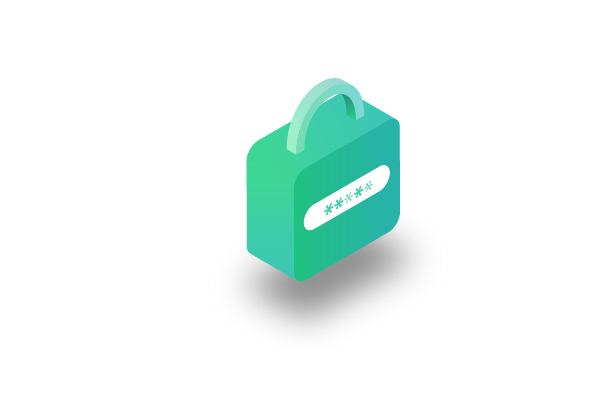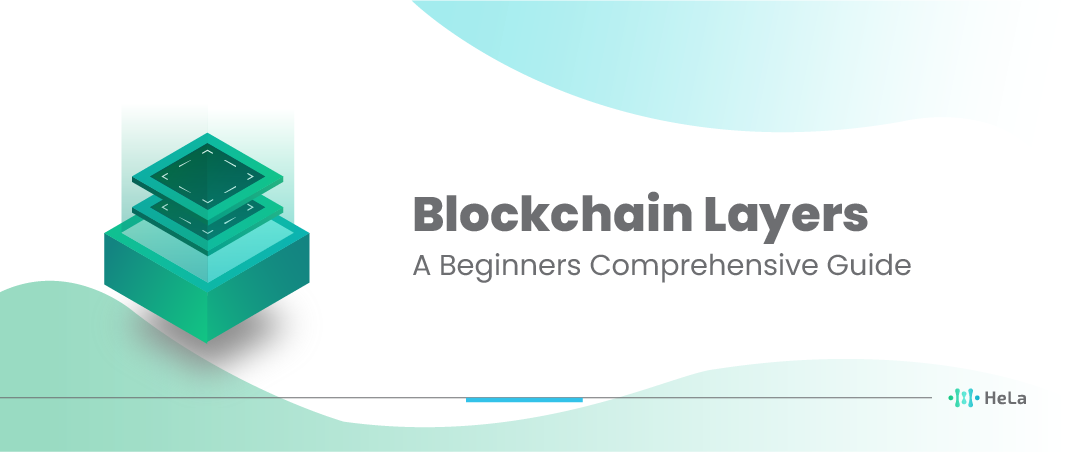Blockchain technology has transformed how we handle digital transactions and data storage, creating a system with different integral parts and components often referred to as Layers of Blockchain. These layers collectively form the backbone of the blockchain architecture, each layer serving a crucial role in various aspects, from storing data securely to maintaining consensus among network participants. To harness the potential of blockchain effectively, it’s essential to gain a clear understanding of these layers and their respective functions.
At the heart of blockchain technology, the “Layers of Blockchain” consist of multiple building blocks that work harmoniously. These layers include the data storage layer, which securely records and stores transactions in a decentralized manner, and the consensus layer, responsible for ensuring that all participants agree on the validity of transactions. By comprehending the significance and interplay of these layers, individuals and businesses can unlock the true potential of blockchain, revolutionizing industries and enhancing digital trust in our interconnected world.
What are Layers of Blockchain?

Blockchain Layers are like the different parts of a well-structured building. Just as a house has a foundation, walls, and a roof, a blockchain system is made up of several layers, each with its specific job. These layers collaborate to make sure the blockchain works smoothly, keeps information secure, and operates efficiently.
Also Read: Top 10 List of Layer 1 in Blockchain
Think of it this way: the first layer, like a foundation, provides the groundwork for the blockchain. It’s where transactions are recorded and verified. Above that, you have the middle layers, which act like the walls, supporting the whole structure. These layers manage things like consensus, security, and smart contracts. Finally, the top layer, like a roof, offers a user-friendly interface, making it easy for people to interact with the blockchain. So, these Blockchain Layers work together to create a reliable and functional system.
The Different Types of Blockchains
Before delving into the layers, it’s essential to understand the various types of blockchains available. These include:
1. Public Blockchains
Decentralized public blockchains like Bitcoin and Ethereum welcome participation from anyone who wishes to engage. They operate without any restrictions, allowing anyone to join and use them.
These blockchains employ various methods to reach agreements among participants on the validity of transactions and the state of the network, which we often refer to as “Blockchain Layers.” These layers work together to ensure the security and reliability of the blockchain, making it a transparent and accessible technology for anyone interested in engaging with it.
2. Private Blockchains
Private blockchains, often referred to as “Blockchain Layers” in the context of enterprise applications, are designed to meet the specific requirements of businesses. These permissioned blockchains, like Hyperledger Fabric, are accessible only to a limited group of approved participants.
This exclusivity ensures that sensitive business data and operations remain secure and confidential, making private blockchains a preferred choice for enterprises seeking to harness blockchain technology for their tailored needs.
3. Hybrid Blockchains
Hybrid blockchains, often exemplified by platforms like Dragonchain, represent a clever fusion of both public and private blockchain elements, striking a harmonious balance.
These hybrid systems, sometimes referred to as “Blockchain Layers,” combine the openness and transparency of public blockchains with the control and privacy features of private ones. This versatile approach accommodates various use cases, catering to the specific needs of businesses and organizations while still harnessing the inherent advantages of blockchain technology.
4. Consortium Blockchains
Consortium blockchains, which fall under the category of Blockchain Layers, are essentially networks owned and governed through collaboration. Examples like R3 Corda showcase how these blockchains operate, with various private nodes coming together to form a consortium.
In this setup, multiple organizations or entities work together to manage and validate transactions, creating a secure and shared ledger while maintaining control over who can participate and access the blockchain.
Delving into the Layers of Blockchain Architecture

Most blockchains, regardless of their type, typically consist of the following layers:
1. Application Layer
Within the Blockchain Layers, we find the Application Layer, which is like the user-friendly face of the blockchain world. Think of it as the part of your smartphone where you have all those handy apps. Here, you’ll discover blockchain-based applications like digital wallets, lending platforms, and staking mechanisms.
These are the tools and services that regular folks like you and me can use to manage our digital assets and participate in the exciting world of blockchain technology. It’s where the magic happens for everyday users in the blockchain realm.
2. Services and Optional Components
Within the realm of Blockchain Layers, there exists a vital layer focused on boosting the blockchain’s functionality. This layer incorporates essential elements such as Decentralized Autonomous Organizations (DAOs) and Oracles, which serve to expand the capabilities of blockchain technology.
DAOs are essentially self-governing entities, allowing for decentralized decision-making, while Oracles act as bridges connecting the blockchain to real-world data, enabling smart contracts to interact with external information sources. This layer plays a pivotal role in evolving the blockchain ecosystem by facilitating autonomous governance and enabling the integration of real-world data, making blockchain technology even more versatile and powerful.
3. Protocol (Consensus) Layer
The Protocol (Consensus) Layer, nestled within the Blockchain Layers, plays a crucial role in making sure all the computers (nodes) in a blockchain network work together smoothly. It’s like setting up the ground rules and making sure everyone agrees on them.
This layer also specifies what qualifications validators need to have, kind of like the referees of the blockchain, to ensure fair play and security. So, think of it as the rulebook and the referee’s whistle that keeps the game fair and the players in sync.
4. Network Layer
The Network Layer, which plays a crucial role in Blockchain Layers, is like a digital matchmaker for peer nodes. It helps these nodes find each other and build strong connections, just like making friends in the digital world. This layer ensures that nodes can discover one another and establish trustworthy bonds, which is vital for the overall functioning of the blockchain network. Think of it as the friendly handshake that happens before all the exciting blockchain activities begin!
5. Data Layer
The Data Layer, which plays a crucial role in the world of Blockchain Layers, is all about taking care of where and how data is stored and organized. It’s like the guardian of transaction information, making sure it stays safe, secure, and private. Imagine it as the digital librarian who ensures that your data is neatly organized on the virtual bookshelves and that no one sneaks a peek at your personal information. So, in a nutshell, the Data Layer in Blockchain Layers is all about keeping your data intact and confidential.
6. Hardware/Infrastructure Layer
The Hardware/Infrastructure Layer, one of the essential Blockchain Layers, plays a vital role by supplying the required computing power and resources. In this layer, you’ll find various components such as miners, validators, and virtual machines. Miners are like the backbone of the blockchain, processing transactions and creating new blocks, while validators ensure the accuracy of these transactions.
Virtual machines provide a secure environment for executing smart contracts and decentralized applications. Together, these elements keep the blockchain network running smoothly and securely, making sure everything works as it should.
Understanding L1 and L2 Blockchains
While the aforementioned layers make up a complete blockchain, it’s also crucial to differentiate between Layer 1 (L1) and Layer 2 (L2) blockchains:
Layer 1 Blockchains
- These are the foundational blockchains, like Ethereum and Bitcoin.
- They are mostly public and operate independently, sustaining themselves.
- HeLa, Ethereum and Bitcoin are well-known examples of Layer 1 blockchains. They create and validate all transactions directly on their own network.
Layer 2 Blockchains
- These blockchains provide solutions for scalability.
- They rely on Layer 1 blockchains, like Ethereum or Bitcoin, for security but use a different way to reach consensus.
- Layer 2 blockchains are designed to process a large number of transactions more efficiently by offloading some of the work from Layer 1. They help in reducing congestion and lowering transaction fees on Layer 1.
The Importance of Security in Blockchain Layers

In the realm of blockchain technology, security holds paramount significance. At every step, from the core protocol to the smart contracts, we need to be vigilant against potential vulnerabilities. Think of blockchain as having several layers, like layers of protection in a fortress. Each layer needs a thorough audit to keep the whole system safe and efficient.
Also Read: Layer 1 vs Layer 2 Blockchains: A Comprehensive Guide
Imagine the blockchain as a stack of these layers. The bottom layer, the protocol, is like the foundation of a building. If it’s shaky, the whole structure is at risk. Moving up, you have the various layers, like transaction processing and consensus mechanisms. Finally, at the top, you have smart contracts, which are like the applications running on this secure foundation. Auditing each layer helps us identify and patch potential weaknesses, making the entire blockchain system more resilient and trustworthy. In the world of blockchain, it’s all about securing these Blockchain Layers to ensure the safety and efficiency of the whole system.
Conclusion
Blockchain technology, with its multi-layered structure, provides a dependable and safe system for handling digital transactions and storing data. When we dive into the intricacies of Blockchain Layers, we gain a deeper appreciation for the brilliance of this groundbreaking technology. Each layer has a specific role, like pieces of a puzzle, that come together to create a robust and secure ecosystem for digital operations.
As the world of blockchain continues to advance, it’s crucial to stay informed and ensure that each layer remains secure, efficient, and optimized. Remember, the strength of a blockchain lies in the collective efficiency and integrity of its layers. So, as we move forward, let’s keep a close eye on these layers to ensure that they work seamlessly together, making blockchain technology even more reliable and impactful in our digital age.
Disclaimer: The information provided by Hela Labs in this article is intended for general informational purposes and does not reflect the company’s opinion. It is not intended as investment advice or recommendations. Readers are strongly advised to conduct their own thorough research and consult with a qualified financial advisor before making any financial decisions.

Joshua Soriano
I am Joshua Soriano, a passionate writer and devoted layer 1 and crypto enthusiast. Armed with a profound grasp of cryptocurrencies, blockchain technology, and layer 1 solutions, I've carved a niche for myself in the crypto community.
- Joshua Soriano#molongui-disabled-link
- Joshua Soriano#molongui-disabled-link
- Joshua Soriano#molongui-disabled-link
- Joshua Soriano#molongui-disabled-link

